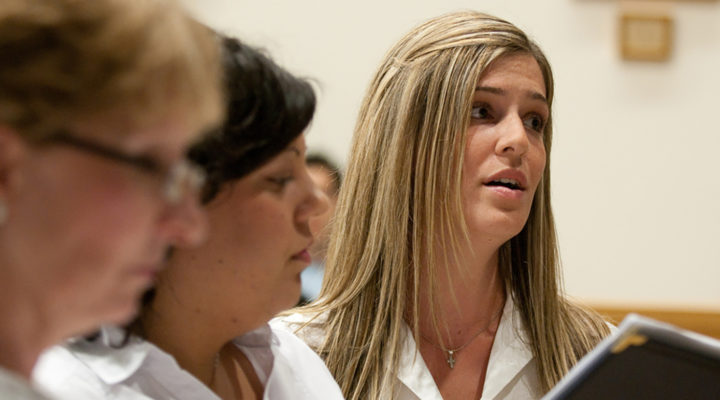A lot of Christians share the assumption that the bigger the church, the more blessed it is.
One of the biggest flaws in that assumption is that it’s poor theology.
“God is not more concentrated because there are more of us in the room,” said Karl Vaters, pastor of Cornerstone Christian Fellowship in Fountain Valley, Calif., and a blogger and author on the challenges faced by small congregations.
The truth is small churches, when healthy, have capabilities large ones do not.
Vaters emphasized that message during a recent FaithSoaring Churches Learning Community conference call titled “Innovative Small Churches Get Unstuck.”
Vaters has become one of the nation’s leading experts on the common denominators that fuel small-church health — and decline.
Many know him through Christianity Today, where he pens his Pivot blog on the issues facing small churches. He is the author of The Grasshopper Myth: Big Churches, Small Churches and the Small Thinking that Divides Us.
He’s also the founder of New Small Church, a ministry designed to provide training, leadership and other resources largely unavailable to congregations with memberships under 200.
It’s a message FaithSoaring organizer George Bullard and other participants said is sorely needed in an era when megachurches are considered ultimately successful because of their size (2,000 or more) and high-quality music, ministries, preaching and sometimes even political influence.
Getting unstuck doesn’t require the outside world to change their view of health and success, but that small churches do. They are often held back because they share in opinions that hold membership size and growth as primarily sacred.
Incubators for leadership
But even the core definitions of “small” have changed over the years, Vaters said.
It used to be that a church with a regular attendance of 100 was assumed to have 200 on the books. Now that is 300 on the rolls for 100 who worship regularly.
 Even the meaning of “average Sunday morning attendance” has changed. That used to be defined as attending three times a week. Now it’s two times a month, he said.
Even the meaning of “average Sunday morning attendance” has changed. That used to be defined as attending three times a week. Now it’s two times a month, he said.
A small church typically has 25 to 200 members and 200 to 350 are considered midsize. From there to 2,000 are big churches and congregations above that are defined as megachurches.
The average church size in the U.S. is around 85 members, compared to around 65 globally, Vaters said.
Another assumption about these churches is that they are small churches because they’re not doing a very good job of evangelism.
That opinion in part arises from the church growth movement over the past 40 years. An unintended negative consequence of that movement has been to look down on the value of small churches.
But there are qualities small congregations have that larger churches do not, according to Vaters.
“There are a lot of people who don’t want to worship in a massive setting,” he said. “They draw closer to Jesus, feel more involved, feel more important in a small setting than they do in a larger one.”
Small churches also are incubators for leadership.
Imagine a man who has rudimentary guitar-playing skills, he said. In a smaller church he likely will be able to contribute immediately in worship and may even become the worship leader in a short time.
“When you have to step up and lead, you tend to get in there better and learn,” he said.
‘They were frustrated’
When small, healthy churches do evangelism well, it does not guarantee numerical growth, Vaters said.
“We have been told … if a church is healthy it should be reaching people and people should be getting saved,” he said. But that growth, “doesn’t take place in a whole lot of circumstances.”

Small congregations do not mean small achievements, Karl Vaters says. Instead, explore the advantages that come with small memberships. (Photo/Smylers/Creative Commons)
Vaters offered his own church’s situation as an example. The small congregation is regularly welcoming new members but also sending people out to serve in ministries elsewhere.
And that’s a necessity because property values in their area, located just a few miles from Disneyland in Southern California, are so high the congregation cannot afford to expand in order to sustain membership growth.
For any church to grow above 200 — the “magic number” in church growth calculations — it requires larger facilities and staff. The church also needs sympathetic local government officials to rezone land as needed, Vaters said.
Usually it’s not just general attitudes about small churches that need to be more realistic, but those of the members and pastors of those churches, he said.
“A small church is not a scaled down version of a big church.”
Vaters said he knows of too many small churches of 50 or so members trying to offer men’s and women’s Bible studies, men’s and women’s choirs, various youth groups and recovery programs.
Another congregation was trying to start a small-group ministry.
“They were frustrated they couldn’t get them going,” Vaters said.
He had to remind them the congregation itself is the small group.



